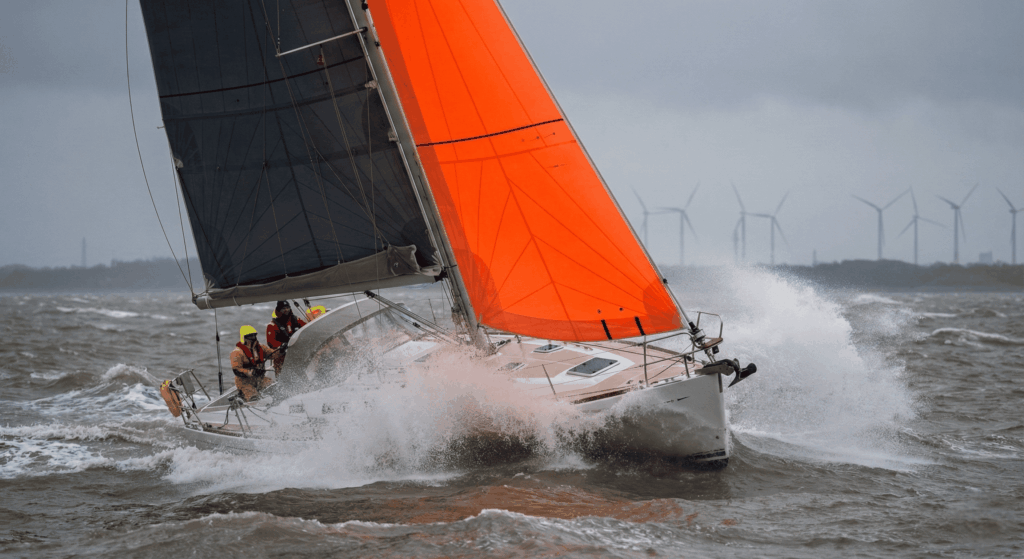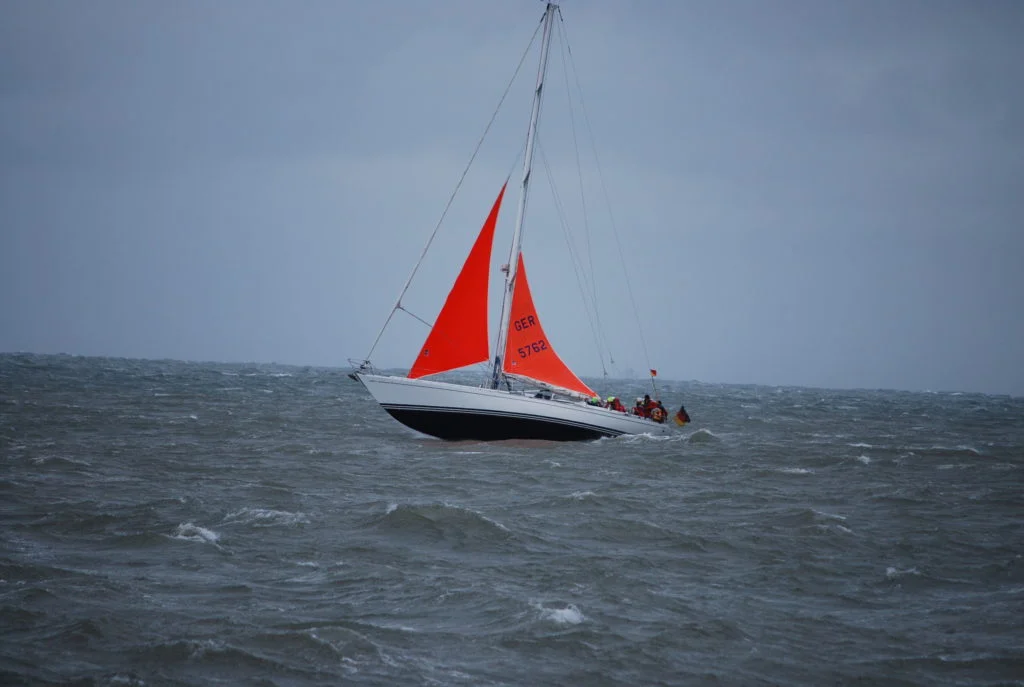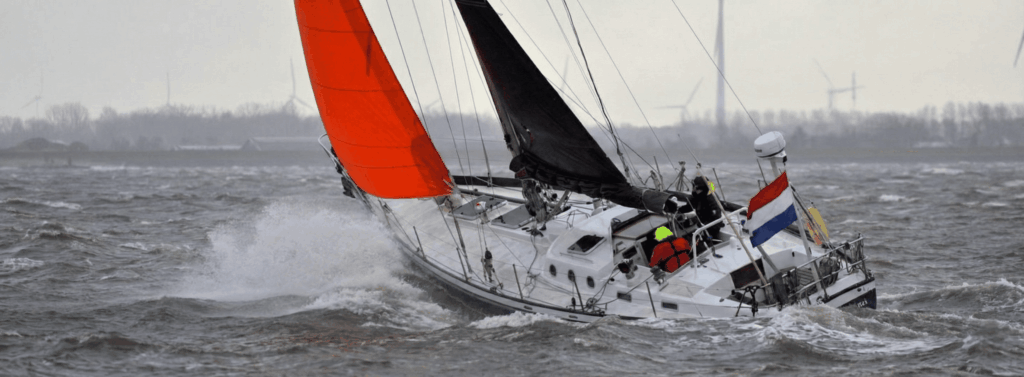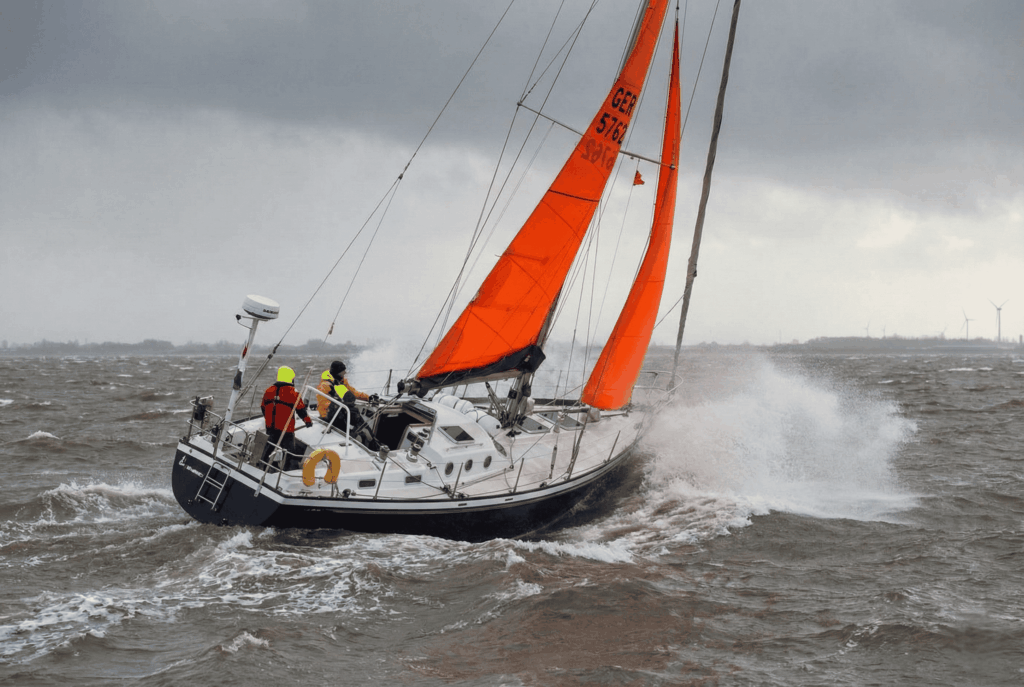
Storm sail
Nothing is as changeable as the weather. A sailing trip on a beautiful summer day can turn into a survival trip in harsh conditions within minutes. Especially if you are taking a longer trip, it is highly recommended in the interest of safety to supplement your sailing wardrobe with a storm jib and/or a trysail.
Hopefully, you will never need to use it, but it is a very comforting feeling when you and your boat are prepared for a storm. Especially when the weather changes quickly, the boat starts to list, and you are faced with high waves, it is very important that storm sails can be set quickly and easily. In addition, a storm sail must be strong in all conditions so that you can continue sailing safely.
Storm sails for maximum safety and control
Our storm sails are specially designed for situations where safety and controllability are crucial. We manufacture, among other things:
- Storm jib – a small, robust headsail that is essential in storm conditions.
- Trysail – a full storm sail as an alternative to the reefed mainsail, ideal for rough seas.
Storm jib
A storm jib is often the first addition to the existing set of sails. Sailmaker De Vries Maritiem has stormjibs with sliders that are suitable for running on a (cutter) staysail. We also make stormjibs that can be carried over a furled genoa.
Trysail
If you make a long trip with any regularity it is a consideration to buy a 3e reef with extra reinforced corners, pull straps and press sleeves in the mainsail. This allows you to further reduce your mainsail in very strong winds.
In very extreme situations, you may prefer to reduce sail even more. For such situations, the advice is to have a trysail on board. A try sail is usually run on a separate rail on the mast next to the rail for the mainsail. The top is hoisted to the mainsail halyard and the clew is attached to an eye on the deck.



Versions
Storm sails are made from heavy Dacron because this type of fabric has proven itself under the most severe conditions. It is strong and will not tear easily. Where necessary, extra heavy reinforcements are applied using tension straps and corner reinforcements.
The storm sails can be made in white Dacron, but for a small additional charge, the sails can also be made entirely or partially in bright orange Dacron to greatly increase visibility.